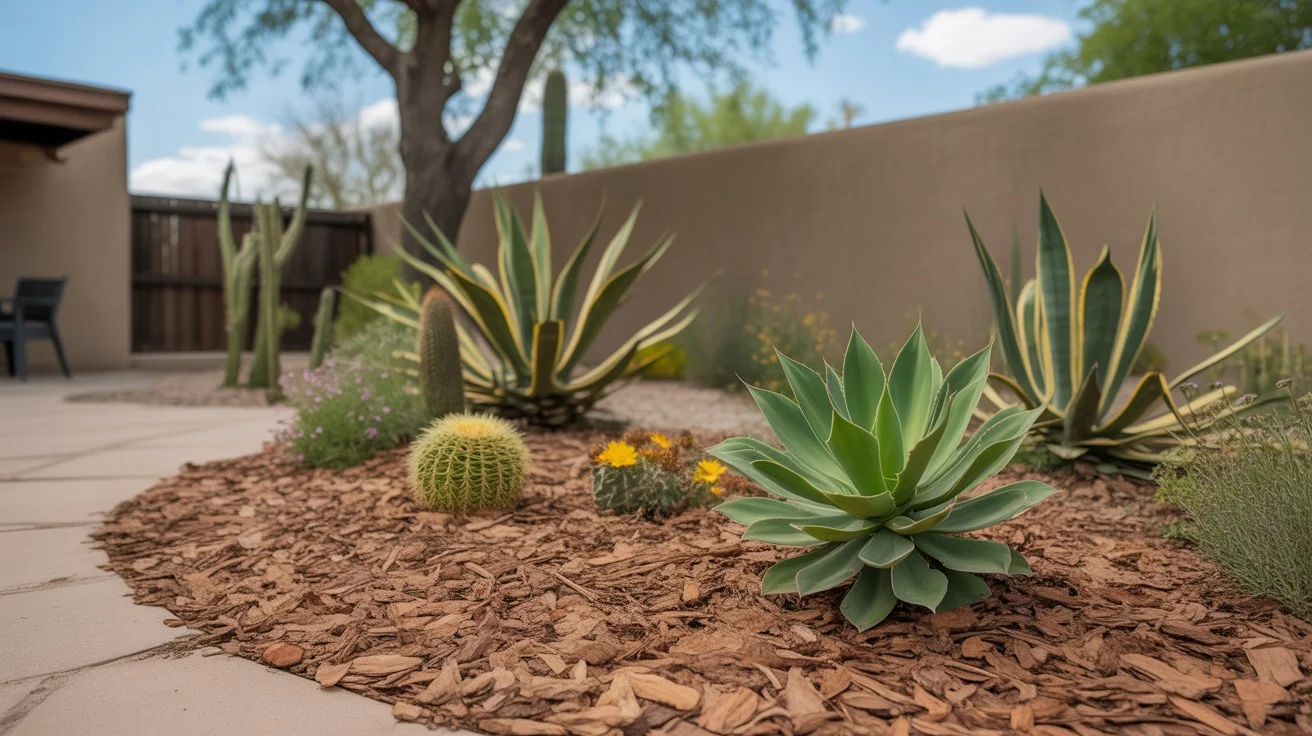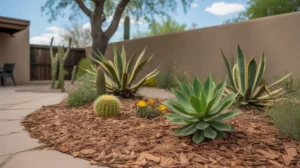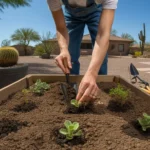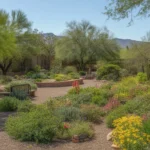As the warm spring sun graces Queen Creek gardens, it’s time to awaken your yard from its winter slumber. One simple yet powerful tool in your spring gardening arsenal is leaf mulch. This humble organic material can work wonders for your soil, plants, and overall yard health. Let’s explore the benefits of leaf mulch and how to effectively use it in your Queen Creek garden this spring.

The Unsung Hero of Healthy Soil
Leaf mulch, which is simply shredded or composted leaves, is a gardener’s best friend when it comes to improving soil health. As the mulch breaks down, it adds essential nutrients to the soil, acting as a natural fertilizer. This slow-release process ensures your plants receive a steady supply of nourishment throughout the growing season.
Moreover, leaf mulch helps improve soil structure by increasing its organic matter content. This leads to better water retention, improved aeration, and a more hospitable environment for beneficial soil microorganisms. By incorporating leaf mulch into your Queen Creek garden beds, you’re setting the stage for robust plant growth and vibrant blooms.
Weed Warriors: Mulch to the Rescue
Weeds are the bane of every gardener’s existence, but leaf mulch offers an eco-friendly solution to keep them at bay. By applying a thick layer of mulch around your plants, you effectively block sunlight from reaching the soil surface. This prevents weed seeds from germinating and reduces the need for harsh chemical herbicides.
Not only does mulching suppress weeds, but it also saves you time and energy in the long run. Instead of constantly battling unwanted growth, you can focus on enjoying the beauty of your Queen Creek garden. Plus, the natural look of leaf mulch adds a touch of rustic charm to your yard.
The Water-Wise Way to Garden
In the arid climate of Queen Creek, water conservation is a top priority for responsible gardeners. Leaf mulch acts as a natural moisture regulator, helping to reduce evaporation and keep the soil consistently moist. By retaining water in the soil, mulch minimizes the frequency of watering required, saving you time and precious resources.
Furthermore, leaf mulch helps regulate soil temperature by insulating the ground from extreme heat and cold. This temperature moderation is particularly beneficial for tender spring seedlings and heat-sensitive plants. By creating a more stable growing environment, you’ll encourage healthier root development and overall plant resilience.
Putting Leaf Mulch to Work in Your Yard
Incorporating leaf mulch into your Queen Creek spring gardening routine is a breeze. Start by collecting fallen leaves from your yard or sourcing them from local suppliers. Shred the leaves using a mulching mower or leaf shredder to create a finer texture that will decompose more readily.
Apply a generous layer of leaf mulch, about 2-3 inches deep, around your plants and in garden beds. Be sure to leave a small gap around the base of each plant to prevent moisture buildup and potential rot. As the season progresses, top up the mulch as needed to maintain its depth and effectiveness.
Embracing Nature’s Bounty
By harnessing the power of leaf mulch, you’re not only nurturing your Queen Creek garden but also embracing a sustainable and eco-friendly approach to yard care. You’re recycling natural materials, reducing waste, and minimizing your reliance on synthetic fertilizers and herbicides.
As you watch your spring garden flourish under the nourishing influence of leaf mulch, take pride in knowing that you’re working in harmony with nature. Your thriving plants and vibrant yard will be a testament to the magic of this simple yet effective gardening technique.
So, as you embark on your spring gardening journey in Queen Creek, remember the transformative power of leaf mulch. By incorporating this natural wonder into your yard care routine, you’ll cultivate a healthier, more resilient, and incredibly beautiful garden that will be the envy of the neighborhood.











